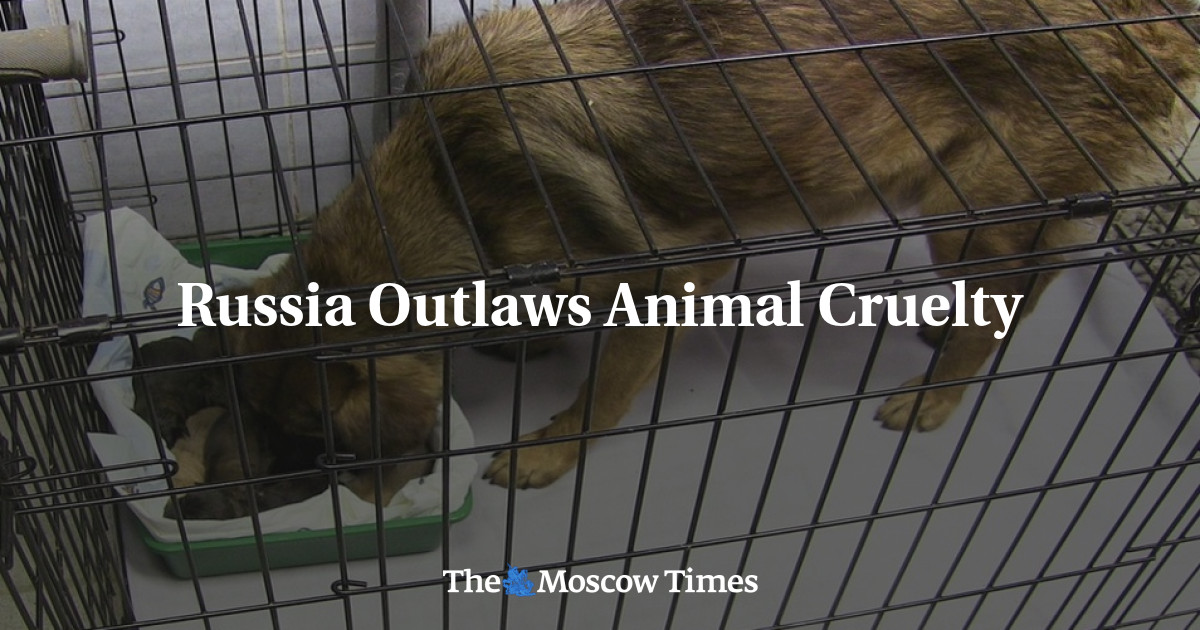Animal cruelty is a pervasive issue that elicits emotional reactions worldwide, and Russia is no exception. While laws exist to prohibit and punish such offenses, the enforcement of these laws remains a contentious topic. This article will delve into the current legal framework surrounding animal cruelty in Russia, explore the various loopholes that undermine effective enforcement, and examine societal attitudes that may contribute to the persistence of such abhorrent practices.
In 2018, Russia enacted a set of laws aimed at safeguarding animals from cruelty, thus marking a significant shift in the nation’s approach to animal welfare. These laws encompassed a range of offenses, including physical abuse, neglect, and the exploitation of animals for entertainment or profit. The penalties for animal cruelty range from fines to imprisonment, depending on the severity of the offense. Despite this legal progression, the reality on the ground is far more complex. Enforcement mechanisms often falter, and the cultural context surrounding animal welfare can impede true progress.
One major challenge in addressing animal cruelty in Russia lies in the enforcement of existing laws. While regulations may appear robust on paper, local authorities frequently lack the resources or motivation to investigate and prosecute animal cruelty cases. Investigative personnel are often overwhelmed, with priority given to more pressing criminal activities. Reports of abuse can languish without action, and the bureaucratic labyrinth can frustrate even the most dedicated advocates for animal rights.
In addition to enforcement issues, significant loopholes exist within the legislation itself. Although laws prohibit conscious acts of cruelty, activities deemed traditional, such as bear wrestling or dog fighting, often slip through the cracks due to cultural acceptance. These practices are often viewed as part of Russia’s heritage, leading to a reluctance to address them substantively. Furthermore, the ambiguity of certain legal definitions means that many acts of cruelty do not meet the threshold for prosecution.
The ambiguity extends beyond the laws themselves and seeps into the cultural psyche. In the past, animals were often regarded as mere property—objects to be used rather than sentient beings deserving of compassion. This mindset has gradually begun to change, particularly amongst the younger generation, who are increasingly attuned to global discourses on animal rights. However, there remains a considerable segment of society that views animals as tools for labor or entertainment, perpetuating cycles of cruelty.
Another critical aspect of the animal welfare conversation in Russia is the issue of stray animals, particularly dogs and cats. Estimates suggest that there are millions of stray animals roaming the streets of Russian cities, and they often face horrific living conditions. While animal welfare organizations strive to provide care and rehabilitation, systemic barriers and limited funding ensure that their efforts can only do so much. The proliferation of stray populations serves as a distressing reminder of the country’s struggle to reconcile human interests with animal rights.
Furthermore, the rise of social media has brought animal cruelty cases to broader audiences, often igniting outrage and calls for change. However, the sheer volume of distressing content can lead to desensitization among the public, and the fleeting nature of online outrage can diminish the momentum needed to effect significant policy changes. This exposes a troubling paradox: the visibility of animal cruelty increases, but the legislative and communal responses remain tepid.
Moreover, the intricacies of enforcement are further complicated by varied regional responses. In some progressive urban centers, such as Moscow and St. Petersburg, there are more robust political and social movements advocating for animal welfare, leading to increased public support and localized initiatives. In stark contrast, rural areas may exhibit indifference or even hostility toward animal welfare efforts, perpetuating outdated views of animals. Disparities in social attitudes result in an uneven landscape of animal rights advocacy across the country, complicating efforts to create a cohesive national strategy.
Despite these challenges, pockets of activism are emerging throughout Russia. Grassroots movements strive to educate the public about the importance of compassion and humane treatment, often turning to creative methods to engage communities. Some local organizations have taken to creating awareness campaigns that reach schools and community centers, aiming to instill values of empathy in the next generation.
For any meaningful change to occur, it is vital for Russian society to confront the deep-seated attitudes that contribute to animal cruelty. This requires a multifaceted approach that includes enhancing legal frameworks, improving enforcement mechanisms, and fostering a cultural shift towards recognizing animal sentience. Public engagement and education initiatives play a crucial role in nurturing a sense of responsibility for animal welfare.
In conclusion, while animal cruelty is illegal in Russia, gaps in enforcement and systemic cultural attitudes continue to undermine these laws. The existence of numerous loopholes allows traditional practices that involve animal suffering to persist largely unchecked. For a transformative shift to take place, there must be a concerted effort from both authorities and society as a whole to prioritize animal welfare. Only through comprehensive reform and a collective reevaluation of human-animal relationships can we begin to eradicate the silent plight of animals suffering in neglect and cruelty, establishing a society that truly values the coexistence of all sentient beings.






